iPlastic containers are everywhere, and with all of those takeout containers piling up, too, it seems like the right thing to do would be to reuse them for food storage in your home. But to keep clean, are plastic food containers dishwasher safe? Or do these containers require time-consuming hand washing? We've researched how to clean plastic containers to get the answer for you.
Hand washing your plastic containers is the best way to ensure that they will not warp, keeps them relatively stain-free, and promotes efficient drying. Most designated long-term plastic containers (not takeout boxes) are dishwasher safe. Check the bottom of the box and look for the dishwasher-safe symbol to make sure.
Let's take a closer look at determining whether your plastic containers' material is dishwasher safe. We'll also discuss how to clean plastic containers, remove stains, and leave you with a few additional tips on maintaining food-safe plastic.
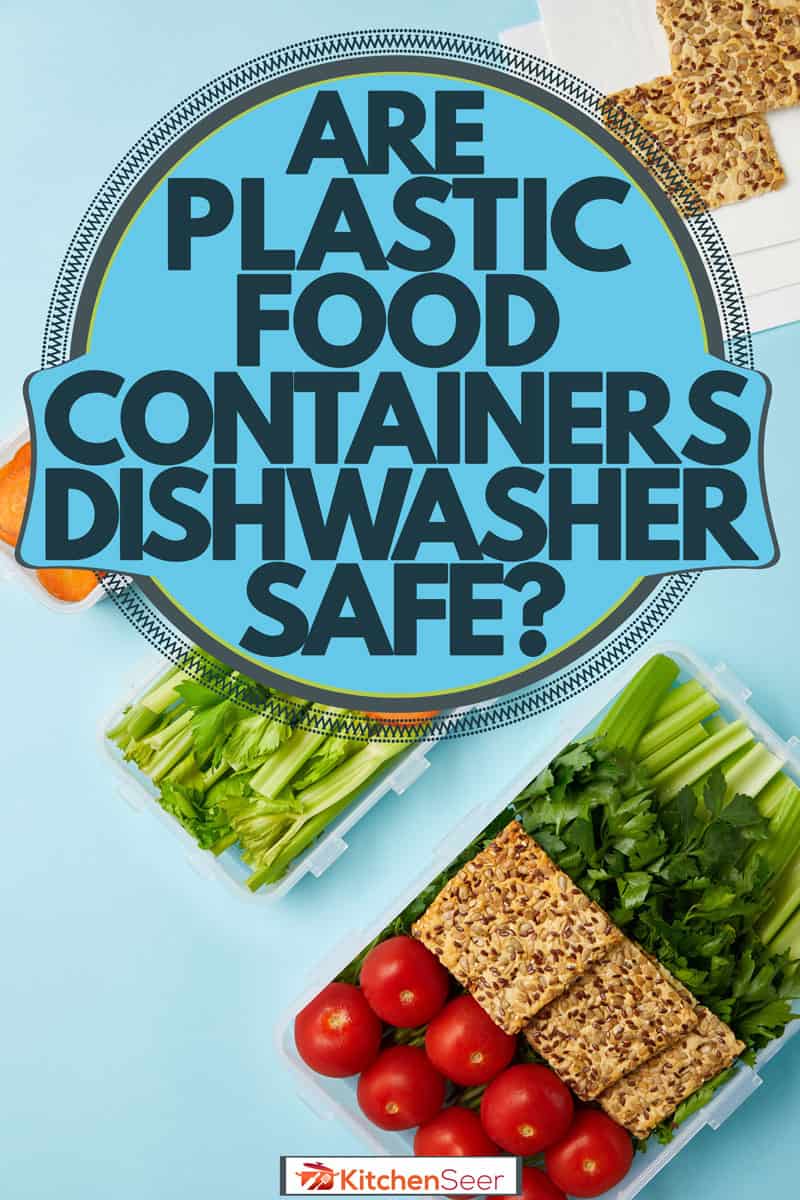
Which Plastic Containers Are Dishwasher Safe?
The best plastic containers to reuse and put in the microwave or dishwasher are explicitly meant for that purpose. Plastic containers like Tupperware are built and tested to be safe for use in both the microwave and the dishwasher. These plastics will also last longer and will hold up better than the flimsy plastic containers that came with your takeout. These plastics are better able to withstand the heat without warping.
Click here for Sistema containers at Amazon.
However, either dishwashing or handwashing can wear plastics. The plastic's surface is not exactly smooth -it is porous, so it weakens over time and suffers damage (although minimal) even from gently scrubbing or abrasive water spray. The make-up of plastic largely determines its durability. For instance, polyvinyl chloride (PVC) plastics should never be washed in the dishwasher as they are prone to warp or melt.
Click here for Fullstar containers at Amazon.
You should avoid putting sealed, leak-proof lids into the dishwasher because the extreme heat can damage the seal. Either handwash these lids, or if the seal is removable, take it out before placing the lid on the dishwasher's top rack. However, if you dishwash a lid without the seal, note that the seal will no longer work if the lid becomes misshapen.
Click here for OXO leakproof containers at Amazon.
What are the dishwasher safe symbols?
When it comes to plastic storage containers, pay attention to certain symbols to determine the containers' durability. A picture of a dishwasher means that the container is dishwasher safe. However, it should be noted that due to heat's ability to melt or misshape some plastics, all plastic containers should be considered top rack only.
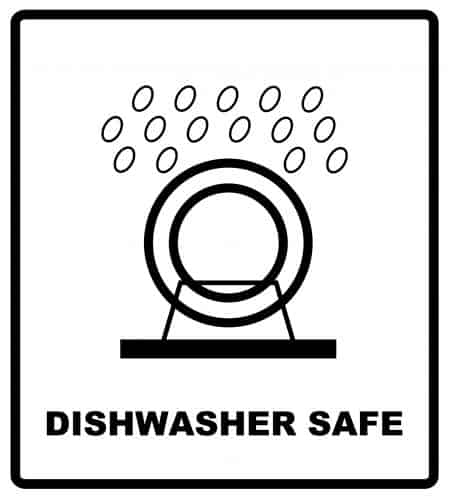
Below, the dishwasher safe symbol to specifically designate top rack placement is depicted. You may or may not see this on plasticware.
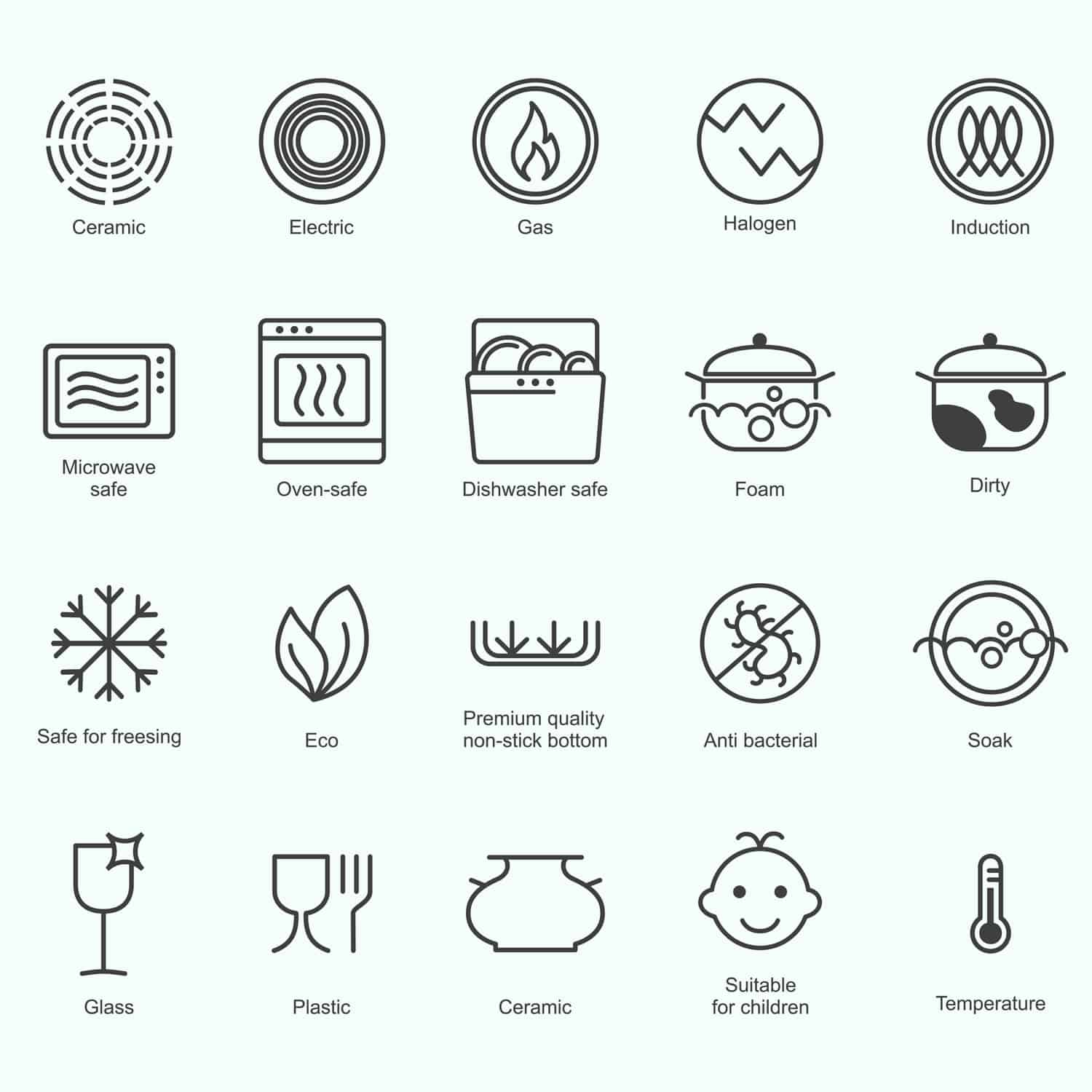
A microwave picture means that the container is microwave safe -so you know containers with this symbol can withstand significant amounts of heat. The plastic isn't necessarily affected by microwave radiation directly, but it is made to withstand hot food for long periods of time.
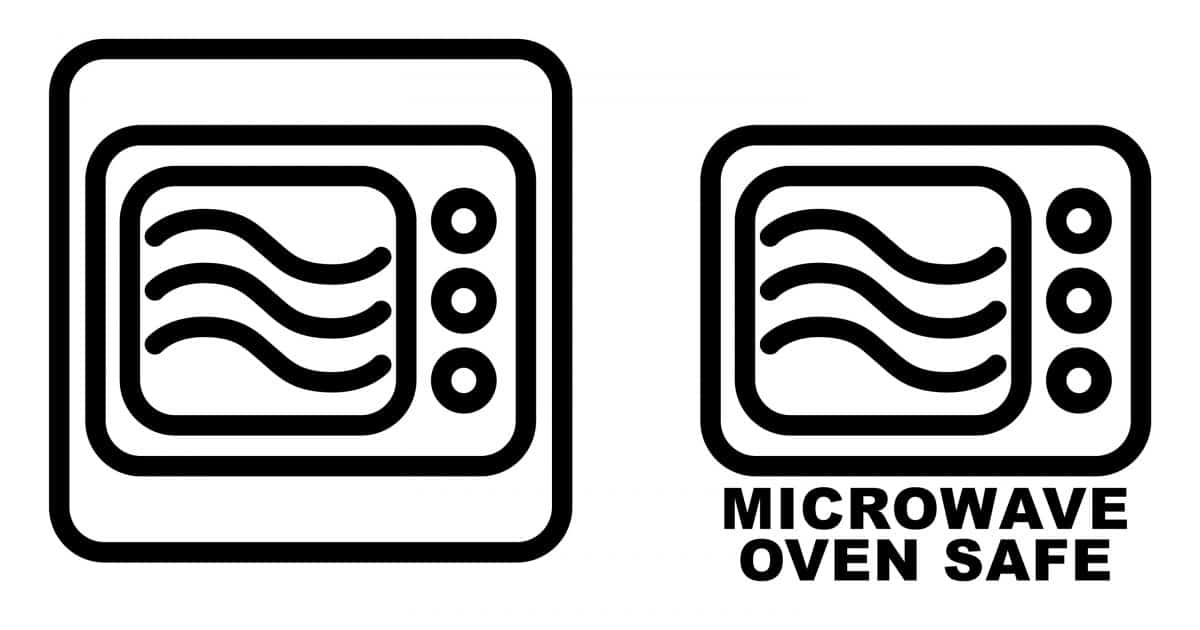
Other symbols found on the bottom of a plastic container may include a number inside a triangle; this number refers to the container’s recycling code based on the type of plastic. Generally, code 5 plastics (or polypropylene) can withstand temperatures up to 210 degrees Fahrenheit -so they are dishwasher safe.

How to Clean Plastic Containers
Since plastic containers, especially takeout containers, are sensitive to heat, the best way to clean them is by hand. You can use water as hot as your hands can comfortably stand and a mild dish detergent (a grease-cutting detergent like Dawn is a good choice). Use a soft cloth or sponge to scrub thoroughly, then rinse. Towel dry or, to save time, allow plastic containers to air dry.
Click here for Dawn at Amazon.
Dishwashing durable long-term plastic containers (not the flimsy takeout type) is completely acceptable. Not only is dishwashing a time-saver, but it will ensure your containers are sterilized. Place plastic containers and lids on the top rack, facing downward. This position allows the dirtiest surfaces to clean while the water can drain effortlessly to aid a faster drying process. If you have several tiny, lightweight containers and lids (such as baby food containers), you can put them into a mesh bag to secure these items on the dishwasher's top rack.
How to remove odor from plastic storage dishes
Create a paste of water and baking soda, pat it into the container, gently rub the mixture around the container using your bare fingers or a soft cloth. Allow the paste to sit for at least half an hour. The baking soda should absorb any lingering odors. Rinse the container, and wash using either the by hand or dishwashing method.
Click here for baking soda at Amazon.
How to remove sauce stains from plastic storage boxes
If your usual dish detergent isn't fighting stains, you can try using equal parts of vinegar and water on plastic containers. Mix the solution and pour into the container; allow to soak overnight. Rinse, then wash the container how you normally would, either by hand or toss it into the dishwasher.
Click here for vinegar at Amazon.
Can you put bleach in a plastic container?
Bleach is usually safe to clean a designated plastic storage container and can be used with great success, especially if there is a stain or a film on the plastic. Ensure that the container is completely dry afterward, and no bleach remains inside after cleaning because bleach is not safe for consumption. Leave the container out for at least 24-hours, and it is even better if you can leave it in a sunny spot so the UV rays can help evaporate the bleach.
To clean using bleach, mix 1-tablespoon bleach with 1-cup water. Pour the solution into the container to cover the stained area and soak for at least half an hour. Rinse—Wash following hand washing or dishwashing method.
Click here for bleach at Amazon.
Tips for Maintaining Food Storage Plastics
Plastic containers are generally considered to be food-safe; however, there are some tips to follow to keep your containers in tip-top shape:
- Replace containers as they visibly start to wear down; good markers of this are discoloration, scratches, or warping.
- Use sturdier containers that are meant for multiple uses instead of disposable take out containers.
- Avoid excessive heat when possible.
- Follow any expiration dates found on the containers to ensure newly packaged food in plastic is fresh. Wash containers immediately after removing food if you plan to reuse them.
- Pay attention to the types of food that you are putting into the containers -- more acidic foods are likely to stain plastics, whereas oily foods can leave a build-up of greasy residue.
In Conclusion
With all of this in mind, plastic containers are still a great way to store leftovers later or take that lunch to work. They are easy to use, lightweight, and relatively cheap. They are safe as long as you take proper precautions, such as following the labels on the bottom of the container that denote the manufacturer's recommendations for use and ensure that the containers remain in good condition.
For more tips on food storage using plastic containers, check out our related posts:
Are Ziploc Bags Safe for Food Storage
Is It Better To Store Food In Plastic, Glass, or Stainless Steel








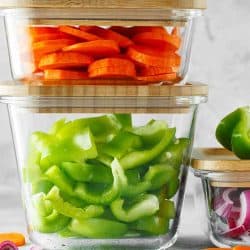

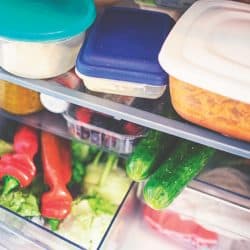

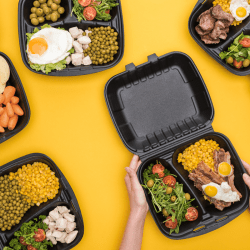
![Healthy food for kids concepts: well balanced school lunch box shot on blue table. School supplies are around the lunch box, How To Seal Plastic Food Containers [4 Cool Tricks!]](https://kitchenseer.com/wp-content/uploads/2020/12/Healthy-food-for-kids-concepts-well-balanced-school-lunch-box-shot-on-blue-table.-School-supplies-are-around-the-lunch-box-250x250.jpg)